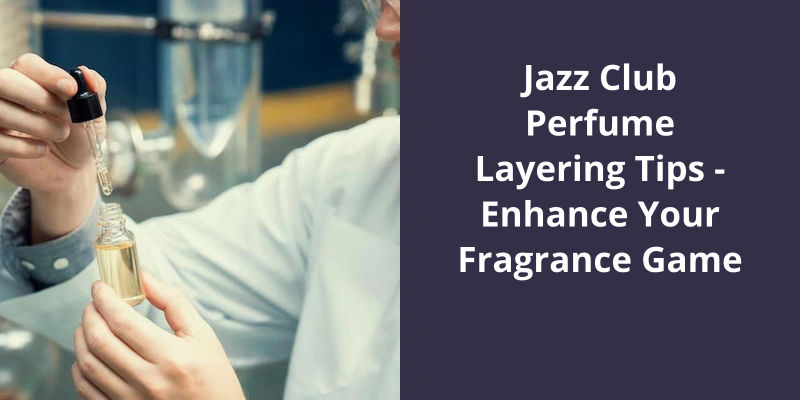Determining the amount of Ambroxan to add to perfume heavily relies on multiple factors like desired scent strength, personal preference, and the other elements within the perfume’s composition. Generally, for every 100 ml of perfume, about 1-5% Ambroxan is recommended. This is because Ambroxan, a synthetic compound that mimics ambergris, is quite potent. However, depending on your preference, you may want to tweak the proportions. More than just a set formula, creating a perfume is a masterful blending of variety and balance. Therefore, while adding Ambroxan, it should be done sparingly and cautiously, making sure it blends harmoniously with the other notes in the perfume. Trial and error are often involved in the process, so it’s best to start with a smaller volume and adjust accordingly based on the desired result.

How Much Ambroxan in Perfume?
Ambroxan is a popular synthetic ingredient that’s been used in perfumes for many decades. It’s a widely used fixative in the fragrance industry, providing depth and longevity to fragrances. However, the concentration of Ambroxan in a perfume plays a significant role in determining the overall scent of a perfume.
If you want a more prominent Ambroxan scent, then a concentration of 10% is necessary. The Ambroxan scent is perfect for cooler and more formal occasions, providing a sense of elegance and sophistication.
So, if you get Ambrocenide diluted at 10%, you need to very carefully dose it. This will help you ensure that the scent is well balanced and not overpowering.
However, it requires a careful balance to ensure that the odor is neither too strong nor too weak. You need to continuously experiment with different concentrations of Ambroxan to find the right balance for your needs.
It’s concentration directly influences the overall scent of a perfume, and a careful balance is necessary to achieve a well-rounded fragrance.
Now that we’ve a brief understanding of what Ambroxan is and it’s usage in perfumery, let’s delve deeper into it’s properties and explore more about it’s role in the creation of fragrances.
What Does Ambroxan Mean?
Ambroxan is a natural chemical compound that’s been used in perfumery for decades. It’s an important constituent responsible for contributing the unique odor of ambergris. One of the most fascinating aspects of this chemical is that it’s a naturally occurring terpenoid. Terpenoids are one of the most common chemical compounds found in plants and animals. This makes Ambroxan one of the rare fragrance ingredients that come from a natural source.
Ambroxan is also known by it’s brand name, Ambroxide. It’s an autoxidation product of ambrein. Ambrein is a natural compound found in the digestive fluid of sperm whales. Traditionally, ambergris was obtained by searching for lumps that had been excreted by sperm whales into the ocean. These lumps were a major source of ambroxan until the international ban on the hunting of sperm whales in 198Currently, most Ambroxan is synthetically produced.
The unique scent of ambergris makes it a highly sought-after ingredient in perfumery. The fragrance is often described as musky, woody, and marine-like with a sweet undertone. The use of Ambroxan has helped perfumers recreate this scent without sourcing ambergris, making it a reliable and sustainable ingredient in the fragrance industry.
Aside from it’s use as a fragrance ingredient, Ambroxan is also a fixative. In perfumery, fixatives are used to prolong the longevity of a scent. Ambroxan ensures that the fragrance notes are released slowly and steadily over time, giving the perfume a longer-lasting effect.
The History and Cultural Significance of Ambergris in Perfumery
- Ambergris is a rare and valuable substance that’s prized by perfumers for it’s unique scent.
- It’s formed in the digestive systems of sperm whales and is believed to be a waste product that’s expelled from the body.
- Ambergris has been used in perfumery for centuries and was once used as a medicine and an aphrodisiac.
- It’s scent is often described as musky, earthy, and sweet with a hint of marine notes.
- Ambergris is still used today in high-end perfumery, but there are also synthetic substitutes available.
- Despite it’s cultural and historical significance, the use of ambergris in perfumery has been controversial due to the ethical concerns surrounding the harvesting of the substance.
Before delving into the percentage of Ambroxan, it’s important to briefly discuss the compound it’s mixed with – Dipropylene glycol (DPG). DPG is a colorless and nearly odorless liquid that’s comprised of three isomeric chemical compounds. It’s a high boiling point and low toxicity, making it a versatile addition to various formulations.
What Percentage Is Ambroxan?
Ambroxan is a synthetic ambergris scent ingredient that’s used in perfumes and fragrances due to it’s fixative and long-lasting properties. It’s often described as having a sweet and musky scent with woody undertones, and is considered to be a modern and versatile ingredient in perfumery. However, the percentage of Ambroxan used in perfumes and fragrances can vary widely depending on the specific scent and the desired effect.
In some cases, Ambroxan may be used at a very low percentage, such as 0.1% or less, in order to provide a subtle hint of ambergris to a fragrance without overpowering other scent notes.
In particular, Ambroxan 10% in DPG is a common formulation used by perfumers and fragrance houses. DPG, or dipropylene glycol, is a colorless and nearly odorless liquid that’s commonly used as a solvent and carrier in perfumes and fragrances.
Other factors such as the composition of other scent notes, the quality of ingredients used, and the individual chemistry of the wearers skin can also have a significant impact on the final fragrance experience.
Chemical Properties and Production Process of Ambroxan
Ambroxan is a synthetic fragrance with a distinctive musky scent. It’s commonly used in perfumes and cosmetics. The chemical properties of Ambroxan allow it to provide a long-lasting, sensual and elegant scent. It’s usually derived from the natural compound, clary sage, but can also be produced synthetically. The production process involves a series of chemical reactions that transform the raw material into the final product. Ambroxan is a highly valued ingredient in the fragrance industry due to it’s unique and desirable aroma.
Conclusion
While a lower concentration may provide a subtle effect, a higher concentration will undoubtedly create a bolder, more recognizable scent. Experimentation is necessary to understand the full potential of Ambroxan and unlock it’s unique olfactory power.




